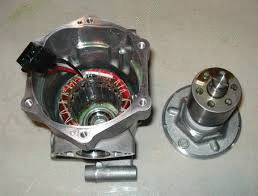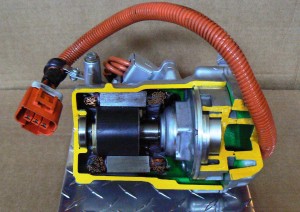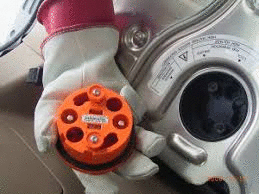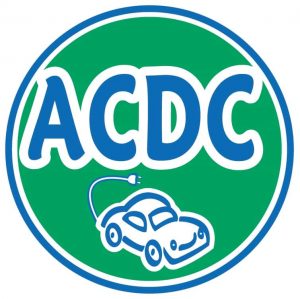LINKS
Links to Help you Learn More about Hybrid and EV Technology
California open web site for EV and Hybrid Want to convert your Prius to a Plug-in? Here is how plus more.
Free Education site for Prius The original Prius site from a smart and dedicated owner
Honda V tec explained This site will help explain vtec used on all Honda HEV
How Stuff Works Basic information on hybrids
Toyota Prius Transmission explained Animation and more. Also applies to Ford HEV.
What is Atkinson Cycle (not used on HEV) Buy my book and learn about LIVC.
AGM Battery Absorbent Glass Mat
L3 Additional Free Online Training
What if I used the wrong oil in a High Voltage Electric compressor?
 If you accidentally add the wrong oil into an A/C system that uses high voltage to spin the compressor the manufactures all say the same thing. Replace every component. Period. Easy to say but what about the reality of the cost involved to the owner or the shop if it was their mistake? In the USA, where I live and work, there are over 2,100,000 hybrids and over 1,500,000 have high voltage compressors. This is the largest concentration of hybrids in the world. I come in contact with many A/C shop owners and mechanics. Here is what I have learned that did not come out of a book.
If you accidentally add the wrong oil into an A/C system that uses high voltage to spin the compressor the manufactures all say the same thing. Replace every component. Period. Easy to say but what about the reality of the cost involved to the owner or the shop if it was their mistake? In the USA, where I live and work, there are over 2,100,000 hybrids and over 1,500,000 have high voltage compressors. This is the largest concentration of hybrids in the world. I come in contact with many A/C shop owners and mechanics. Here is what I have learned that did not come out of a book.In the spring of 2007 a shop owner from Florida confessed to me after a hybrid class I was teaching that he had added ester oil into two Generation II Priuses (2004-2009) and didn’t know until I mentioned it in my class that is was a mistake. I asked him how long the universal oil (ester) was installed and he replied “it had been over a year for both”. I asked if these were good customers. He answered “I know them well”. If the Prius owners had a problem, it would make sense that at least one would have returned to complain. That was my first hint that maybe the OEM’s may just be playing it safe by requiring their own oil.
September of 2007 I had my first road test in a Chevy Tahoe 2 Mode hybrid. It was a press car that is loaned to the media before production. I asked lots of questions, one of which was “who makes the compressor?” The factory representative said she didn’t know. After much searching I found out it was Mitsubishi. The A/C warning label on the hood states that it requires ester oil, without further mentioning adding a specific type. The Dodge Durango 2 Mode I drove in September of 2008 (since discontinued due to lack of funding) required ND-11. Not hard to figure out who supplied the compressor for the Dodge. As I asked some more questions, a good source told me “GM did not want to make a requirement for its dealers to have to buy oil exclusively from Denso”. Mitsubishi evidently was OK with ester oil so GM went with them.
Between the 2 Priuses in Florida and the label under the hood on the GM about the oil required for the Mitsubishi high voltage compressor, looks like universal ester oil may be OK. My company, ACDC, is still researching this but it is looking like the OEM’s may be crying wolf on ester oil, but what about PAG oil.
In October of 2008 my 2004 Prius with 94,000 miles (about 150,000 kilometers) on the car was used once again for hybrid research. Karl Matis, Vice President of HECAT, Inc. based in the USA agreed to come to our 5 day hybrid class and experiment with PAG oil in the ACDC company car. Before he arrived we ordered two used Denso compressors from a salvage yard, ND-11 oil, o rings, a desiccant bag for the dryer, and a service plug from a Toyota dealership. Karl shipped up a special A/C flusher and with the help of Jeff, an ACDC trainer, and a student they added PAG oil into a virgin system. The ACDC Prius A/C system has never been worked on. A base line was established for the A/C system as it was presented. The A/C system was working properly with readings of 130 p.s.i. on the high side and 30 p.s.i. on the low side. After evacuating the system 16 oz. of refrigerant was added with 1 oz. of the wrong type of oil “PAG” directly from the R&R machines automatic oil injector. Over a period of two days more and more PAG oil was added, each time by evacuating the system and after a total of 5 oz. of the wrong type of oil “PAG” was introduced the system still operated without any codes present. The only noticeable difference was the high side had higher pressures, but the system worked. This is not what we expected to see based on what we had read on Toyota’s webs site.
After expecting to see system shut down due to high voltage leaking at the compressors coils and trouble codes set we came to the conclusion that PAG is most likely a problem over time, how long we do not know but not immediately. If you add PAG oil and run the system you may be OK if you can properly flush out the entire system as we did with HECAT flusher and use factory oil (or universal ester? Keep reading). For now we had to replace the compressor, and we did with a used unit, because you cannot buy the service parts needed to repair the compressor.
The ACDC Prius now has 143,000 (was 94K when we tried to break it). The A/C is running fine, with the PAG oil flushed out and ND-11 inside (Now Supercool oil), still no codes. The experiment is over. It is possible to fix a contaminated system without replacing everything, but only if you have the right equipment.
Why do the OEM’s demand that their special oil is used? My guess is it helps keep warranty costs down, provides a base line for them to analyze a failure and satisfies the compressor manufactures, which are Denso and Sanden for now.
ACDC has been doing some research with SupercooL based in Florida. Paul Erdlich and Reijo Seppanen came to Massachusetts to take in our 5 day class (they paid their own way) in the fall of 2010 and also to teach ACDC and our students more about A/C oil. The same car you have been reading about (our 2004 Prius now with 115K miles) was once again subjected to more hybrid experiments. SuperCooLs Hybrid oil was replaced using a Hecat flusher and I am now driving across the United States of America testing that oil. I am already convinced that SupercooL has this figured out, so at this time we are recommending this oil as a replacement for factory oil.
 Why do they require replacing everything in the A/C system if the oil is contaminated with ester or PAG oil? That question most likely has to do with the first question and a lack of confidence in flushing machines and techniques (for which HECAT has the answers). If not for the cost why not replace everything? Customers will rebel as they should!
Why do they require replacing everything in the A/C system if the oil is contaminated with ester or PAG oil? That question most likely has to do with the first question and a lack of confidence in flushing machines and techniques (for which HECAT has the answers). If not for the cost why not replace everything? Customers will rebel as they should!These words; craftsmanship, pride, and individual worth are words I like. When a mechanic can take a broken, worn, or contaminated part and make it useful again, they themselves feel useful. That leads to pride of workmanship. The net effect is overall better work and higher self image.
So the next time you find contaminated oil in a high voltage A/C system, before you replace everything get in touch with me for support. I will add more data here as we learn more.
What type of solvent is used in the HECAT?
Although most flushing machines have fallen out of favor, the HECAT H-1000 flushing machine is gaining converts. It uses Honeywell’s Genesolv SF refrigerant/solvent, which stays in liquid form under light pressure as the machine causes it to pulsate through heat exchangers, hoses and even expansion valves. When the flush cycle is done, the H-1000 uses light vacuum to boil the solvent out of the system—no residue. The machine filters the solvent for reuse, over and over—no disposal.
Craig Van Batenburg
CEO ACDCDO NOT USE Supercool Oil on Hyundai or Kia Hybrids as they have something new that is not compatible.
 A simple “Safe Down” procedure for High Voltage Systems
A simple “Safe Down” procedure for High Voltage Systems When do you need to “Safe Down” a car with a high voltage (HV) system?
- When you are done diagnosing the problem and it is time to remove a HV part
- When you are unsure about your exposure to HV
- When the OEM instructions tell you to
- When you know you should
What order do I use?
- Get all you scan tool data first
- Shut off the car and remove the key
- Put the key away (out of sight or locked up)
- If keyless try to start it again (if it starts there is another keyless remote in the car. Find it or disconnect the 12 volt battery)
- Make sure you have the correct 12 volt battery disconnected. Some HEVs have two 12 volt batteries near each other.
- Wear your Class 0 1000 volt currently certified HV gloves and remove the service plug, turn off the switch or pray as one European HEV does not have a service plug. Leather protectors over your HV rubber gloves is a good idea.
- Hide or lock up the plug or prevent the switch from accidentally turning on. On the Ford Escape and clones ACDC suggests “tape a cardboard cover over the hole and hide the plug”. This is NOT what Ford recommends.
- Always test as you go with a CAT III meter and wear those gloves until you know it is safe.
- Re-test for HV is you have left the car and it was out of your control.
ACDC can provide you with safety training and equipment
What does an IMA battery problem look like?
You can tell how much usable capacity the Insight’s battery has by observing the range of its state of charge (SOC) gauge. A healthy battery will move through the entire range. As the battery degrades, it will move through fewer LCD bars on the gauge. A check engine light will come on with the P1447 code once the battery’s capacity is reduced. The light comes on when the dash read out moves through only about 5-6 bars on the gauge. You will want to do preventive maintenance on an IMA battery even if you don’t have a check engine light to obtain a longer life span and keep the IMA light off.
What goes wrong with IMA batteries?
Battery imbalance
Honda IMA batteries consist of a large number of NiMH cells in series. Due to unequal rates of self-discharge, some of the cells will have a higher or lower state of charge than others. This is easy to correct with the ACDC HBB, but failure to do so results in diminished battery capacity, and can damage the cells that are too high or too low.
Cell degradation
One of the treatable problems that will diminish the cell’s capacity is the formation of nickel dendrites in the cell. Rapidly charging and discharging a cell through its full range can help restore its performance.
How can the ACDC HBB fix an IMA battery?
Battery state of charge imbalance is not easy to treat. If you take a NiMH cell that is fully charged, and then continue to apply charging current to it, it will convert the extra current into heat. Provided that the current is small so the cell doesn’t overheat, this doesn’t appear to damage the cell. Thus if you apply a little charging current to an imbalanced battery, the cells that are high will peak first, and begin to convert the current into heat while the other cells catch up. The trick is knowing how much current for how long and what to do after the NiMH is now at 100% SOC. 100% SOC is not a good thing. This process works 80% of the time and our color manual brings you through it step-by-step. It is also recommended that you do this process yearly as preventive maintenance.
The ACDC HBB is a non-adjustable voltage device at very low constant current. The manual was developed in-house and is as important as the HBB itself.
If the battery is too far gone the HBB process will not fix the battery and it will need to be replaced. You will then need to replace the battery pack.
Craig Van Batenburg is available after the sale to help you. As we use existing used electronic devices for parts to make this unit, they are quite limited in production. A 6 month warranty is provided by ACDC for replacement or repair.
The HBB is only sold to ACDC trained HEV Technicians as it is potentially lethal. Call Craig to see if you qualify.
Last update 2/15/16

